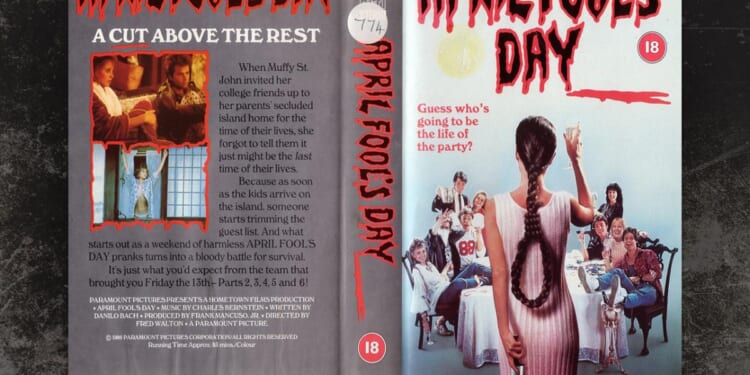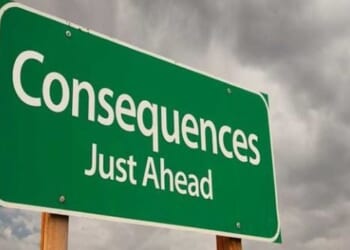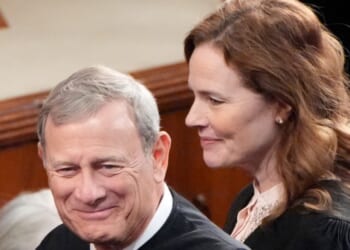April Fool’s Day isn’t especially scary, unless you live in mortal terror over fake internet news items, in which case the early 2010s were your personal hell. It also doesn’t have the kind of homey coziness that begs to be subverted with its own holiday-themed slasher, like Christmas and, to a lesser extent, Thanksgiving before it. But it’s still not surprising that April Fool’s Day emerged from the 1980s slasher boom in 1986; by this point, the genre had already covered Halloween, Christmas many times over, plus New Year’s Eve, and, uh, Friday the 13th (where the holiday in question isn’t really that faux-cursed day but actually just, essentially, the general idea of summer break as a teen-friendly bacchanal).
As it happens, April Fool’s Day, the movie itself, isn’t especially scary, either, though it’s got a lot of potentially good material. It follows a group of college friends who visit a lake island house belonging to the family of Muffy (Deborah Foreman, the lead actress from the original Valley Girl). One of the most realistic things about it is how it introduces several friends of Muffy who aren’t in the bigger core friend group, resulting in some social awkwardness when, say, the slightly dorky girl who only knows Muffy from theater classes gives an awkwardly earnest toast while her goofier dude friends roll their eyes and giggle.
After an initial unsettling accident involving the relatively primitive ferry that brings the guests to the island, they try their best to press ahead with the weekend away – until, of course, people start disappearing and body parts start turning up. At first, many of survivors suspect the old ferryman from the movie’s early scenes, but that’s debunked relatively quickly. There is, of course, a twist ending – and then to really kill the joke, a second twist ending that’s actually the first twist ending repeated.
At times, the movie seems more prescient than it even completely realizes. It opens with VHS camcorder footage shot from a character’s point of view, hinting at the home-recording aesthetics of Blair Witch Project and Cloverfield, and the movie’s slasher story has the bones of an Agatha Christie-style murder mystery, though, again, the movie doesn’t seem to be all that engaged in constructing one, and doesn’t do much work in terms of creating viable suspects. Ten years later, Scream would take far better advantage of this structure, as would its sequels. The more recent Bodies Bodies Bodies also focuses on privileged twentysomethings partying and then turning on each other in a luxe mansion, though that movie is better at teasing out the group’s petty resentments. The people in April Fool’s Day aren’t quite interesting enough to truly hate each other.
So what is April Fool’s Day good for, anyway? The answer is half-assed pranks. For a stretch in the middle of the movie, Muffy and others pull a volume of April Fool’s pranks unseen since at least elementary school. Dribble glasses! A whoopee cushion! An exploding cigar! (I’ve never seen one of those depicted in live-action before.) There are also more unsettling, escalated pranks: an audiotape of a crying baby; strange paraphernalia left in guests’ rooms. The movie gives off the vibe of having been hastily created to cash in on a new fad, even though the idea of April Fools is literally hundreds of years old.
It would be easy to write up a prank review of April Fool’s Day calling it an unsung classic, pulsating with mid-’80s anxiety about cultural authenticity and the pressures of achieving yuppie-level success. Unfortunately, this movie isn’t actually a Slumber Party Massacre-style exploitation movie made with tremendous style and skill. It is, however, a genuine oddity, with an ending unlike anything I’ve seen from a slasher of this period. And maybe it does reflect a certain horror-culture burnout; Friday the 13th had already released five installments, A Nightmare on Elm Street was shooting a third, and the holiday-horror boom was fading out. Maybe it was time to make audiences feel a little, well, foolish.
Jesse Hassenger (@rockmarooned) is a writer living in Brooklyn podcasting at www.sportsalcohol.com. He’s a regular contributor to The A.V. Club, Polygon, and The Week, among others.











